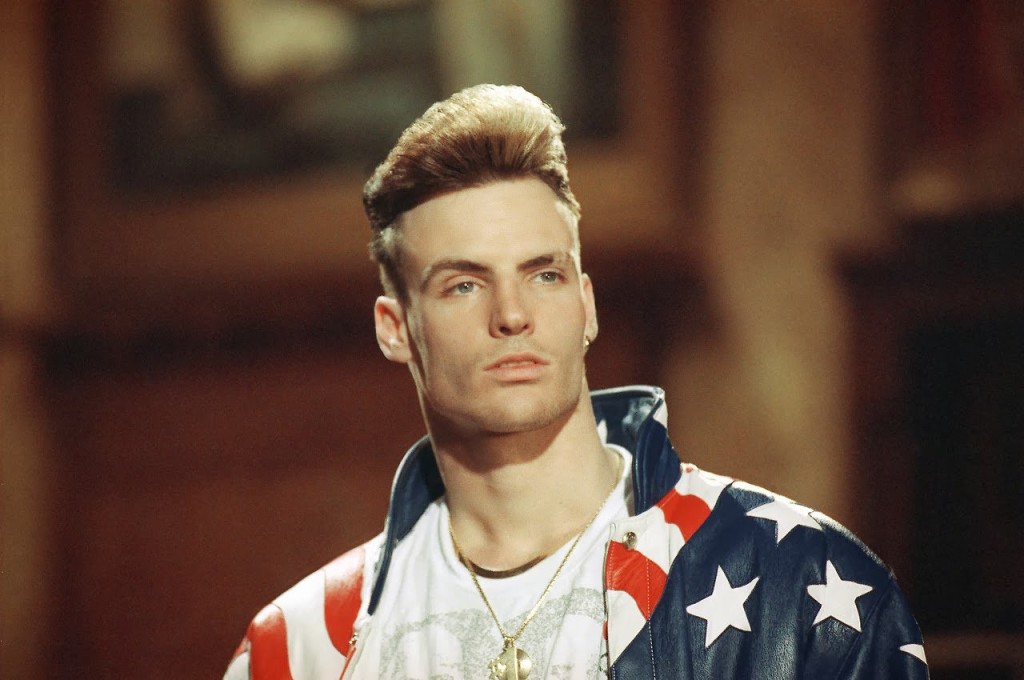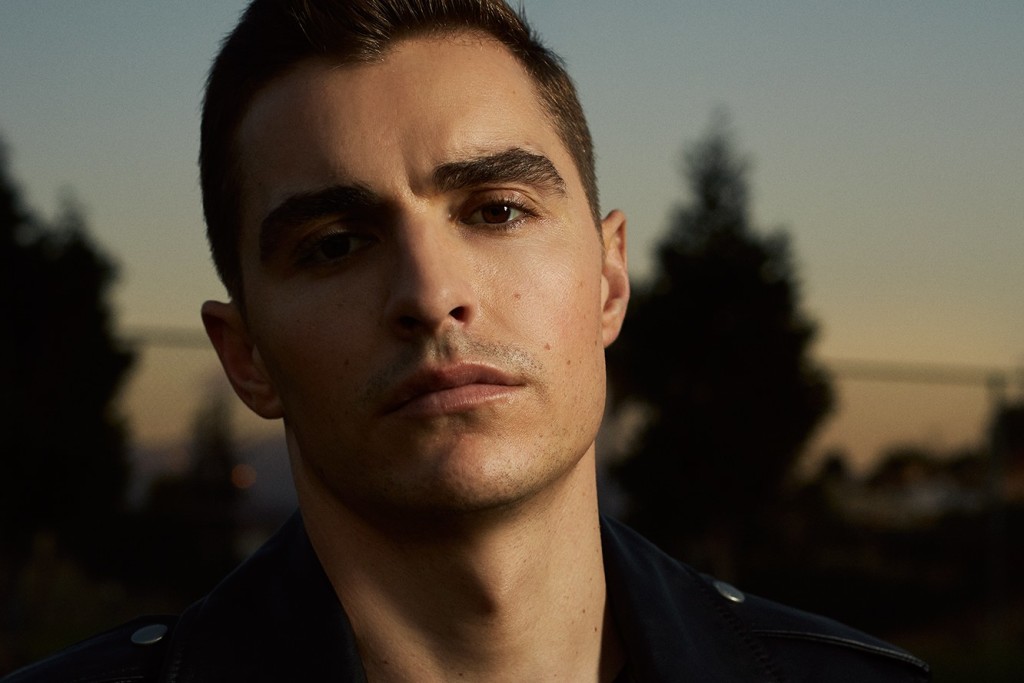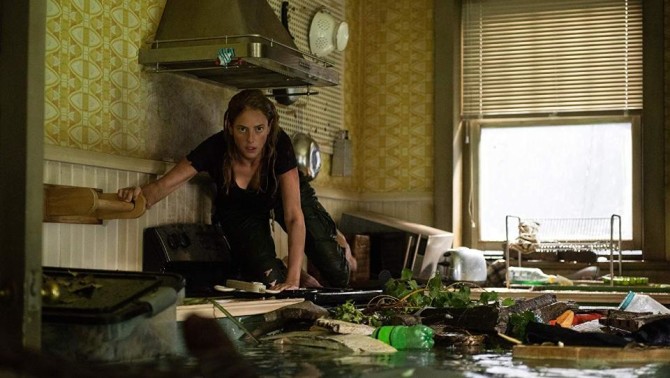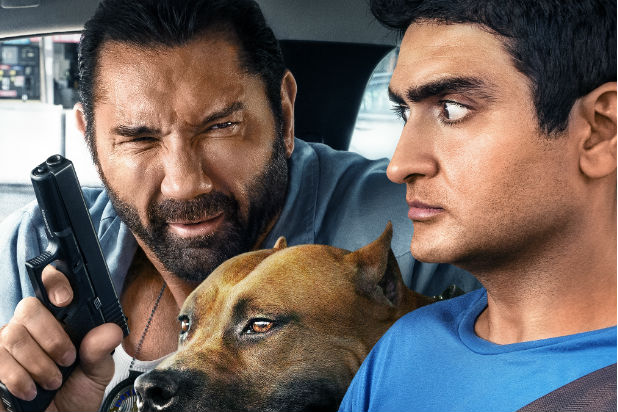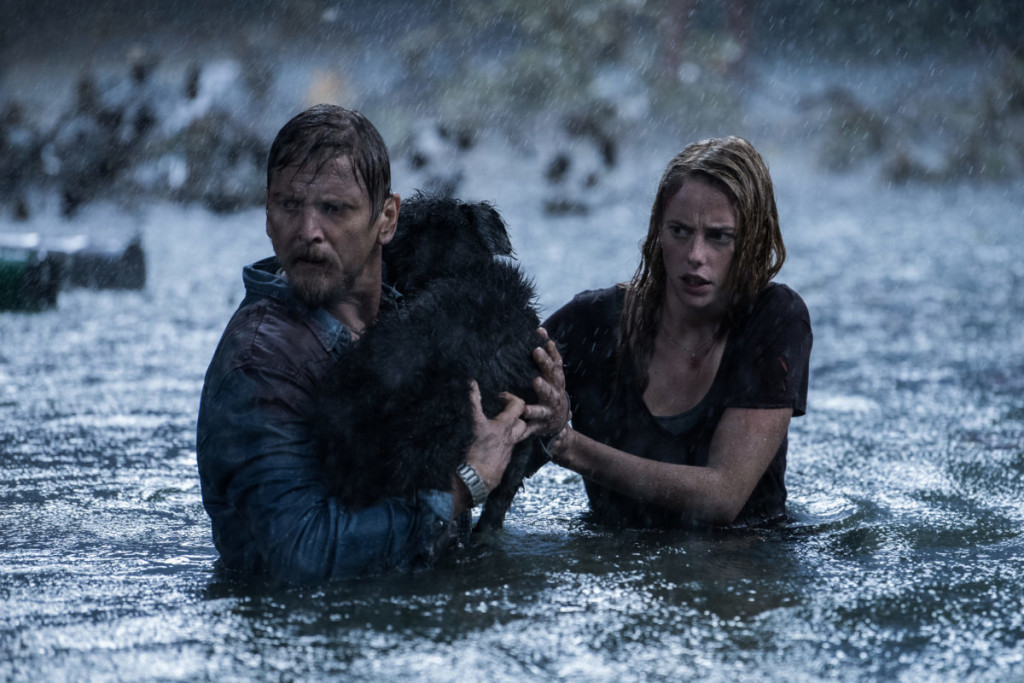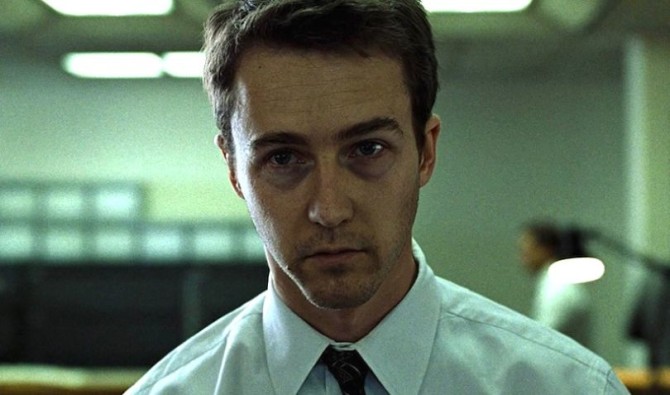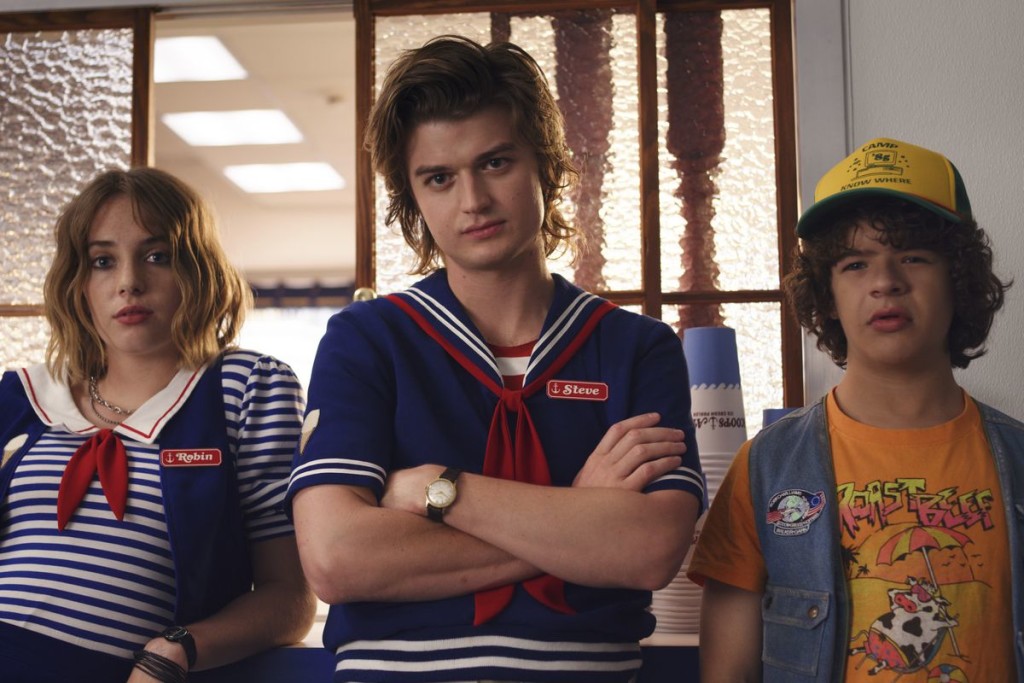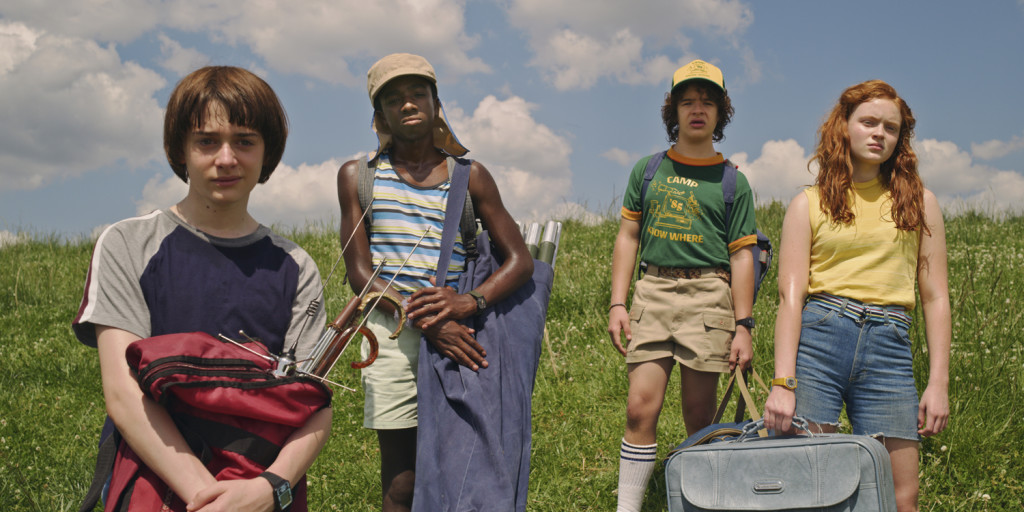Genre: Biopic
Premise: The rise and fall of the greatest one-hit wonder ever – Vanilla Ice.
About: “Something grabs a hold of me tightly. Flow like a harpoon daily and nightly.” Best lyric in the history of music? If this movie happens, one thing they won’t need is a make-up department. That’s because Vanilla Ice doppleganger Dave Franco is rumored to be playing the lead.
Writers: Chris Goodwin and Phillip Van
Details: 127 pages
You know the deal by now. When I read a biopic, I’m looking at whether I’m reading an author who did a quick wikipedia search and copy-pasted the story into Final Draft, or if I’m reading something where the writer actually thought about telling the story in a creative and moving way. If you do the latter, as very few people do, I’m thrilled. If you do the former, it’s one more bullet to the chest of the biopic. Which I’m okay with also because it means we’re one death closer to this genre never being relevant again.
For those new to biopics, here’s how we got here. Event movies destroyed the movie star. The movie star needed to find other options. The biopic became the go-to genre because it allowed the movie star to do what they do best, be the center of attention. The movie was about the historical figure, of course. But it was just as much about the actor. Even better, these movies became a primary vehicle for big studios to win Academy awards. So they were willing to spend big money on the production, the actor, and the director. Do you get to save the world anymore? No. But you get your close-up. And that’s all movie stars care about.
Anyway, I like the idea of a Vanilla Ice biopic because it opens up some avenues to not take the genre too seriously. Maybe play with the format a bit. Have some fun. Let’s see what route the writers took.
Robbie Van Winkle grew up in Miami Lakes, Florida. He was a little kid with a unique dream as a white boy – to be a rapper. Robbie worked as a used car salesman at 20 years old, and he and his crew would go over to the City Lights Night Club every weekend and watch the rap acts. One night, his friends tricked the booker into getting him up on stage, And Robbie killed it. Tommy Quon, the owner of the club, liked what he saw. To him, Robbie was a young Elvis, just doing it in a different style of music.
Tommy ended up selling his club and going out with Robbie on the road where they played in a bunch of dingy redneck bars that didn’t understand what Robbie was doing. But after a year of touring and Robbie piece-mailing together 10 songs, one of those songs, Ice Ice Baby, which was actually a B-track that Ice and his crew felt was weak, started playing on the radio. This led Tommy and Robbie to LA, where they signed with the record label, SBK, who gave Robbie, now “Vanilla Ice,” a half-million dollar advance.
Ice’s single would shoot to the top of the charts where he’d rub elbows with MC Hammer, an artist who many people felt Ice was copying. The single would then lead to an infamous cameo in Teenage Mutant Ninja Turtles 2, and then Ice’s own movie, Cool as Ice (“Drop the zero and get with the hero”). Quickly, however, the media turned on him, saying that he had stolen the hook from David Bowie’s song, “Under Pressure.” In a famous interview, Ice would explain the difference. “We sampled it from them but it’s not the same baseline. It goes DING DING DING DIGA DING DING. DING DING DING DIGA DING DING. That’s the way theirs goes. Ours goes DING DING DING TING AHH DING DING. DING DING DING TING AHH DING DING.”
But things would get a lot worse. Suge Knight, then an up and coming music producer, threatened Ice’s life if he didn’t give him a percentage of the profits from Ice Ice Baby. Ice was so shaken by the encounter that he hired eight body guards with machine guns to guard his house at all times. Ice then turned to drugs to ease the anxiety, and before he knew it, he was out of money with no prospects. Eventually he would come to the realization that it was time to leave Ice behind and reintroduce himself to Robbie.
The most amazing thing about this script is that the rise and fall of Vanilla Ice is structured so evenly. It’s literally the first half is all about the rise and the second half is all about the fall.
To me, the fall was more interesting. I didn’t know anything about the Suge Knight stuff. What do you do when a thug accompanied by four armed men holds you over a ledge and threatens to drop you unless you give him ten percent of the proceeds to your multi-million dollar hit? I guess you say ‘yes.’
As long as we’re talking about hit records, though, we might as well talk about broken ones. I say this every time I review a biopic. Unless you have the most fascinating person with the most fascinating life ever, to the point where you don’t have to change a thing – that’s how amazing it is. If you don’t have that, you need to make some story decisions that set your biopic apart from all the other ones.
This is your typical rise and fall music biopic. There’s nothing inventive about it at all. There’s even a “descends into the drugs and party life” montage. And while Vanilla Ice is amusing, he’s by no means fascinating. So it’s one of those typical reads where you get to the end and you think, “That wasn’t bad.” But it certainly wasn’t great.
A stronger theme probably could’ve helped. With these biopics, since they’re so furiously focused on one individual, you want to say something about the world through that individual. There were tiny moments that hinted at this theme of Vanilla Ice being the first example of cultural appropriation – a white man trying to act black. But they never went that far with it. I think they also could’ve pushed Ice’s desire to be accepted by the black community more. Let’s face it. In this day and age, the media loves race-bait. They eat it up. So if your movie plays into that, people are going to talk about it. And I truly felt like Ice was hurt that people in the hip-hop community weren’t more accepting of him.
And if you’re wondering how do you manage a theme like that in a screenplay – you start with your climax. Your climax should be the moment where your theme is colliding with your character in the most dramatic way. So, as an example (although there are many ways to do it), you might have Vanilla Ice break down about the fact that this community he so badly wants to be a part of has officially rejected him. And then you move backwards from there and make sure there are ample moments throughout the script that keep that topic at the forefront. If your theme is a huge part of your climax, it’s likely the audience will know that THAT’S what your film is about. If it isn’t, we’re probably going to be confused as to what the movie was about. And that was the case with To The Extreme. I’m not sure what it was about other than a singer’s rise and fall.
With that said, I was never bored by To the Extreme. But like all biopics, it’s sort of like reading a wikipedia page while on a Disneyland ride. It’s slightly more exciting than reading it from your couch. And I suppose if you knew nothing about Vanilla Ice, this might wax your candle. But if you don’t know who Vanilla Ice is, do you wanna know? I don’t know. Word to your mother. Peace in the Middle East.
[ ] What the hell did I just read?
[ ] wasn’t for me
[x] worth the read
[ ] impressive
[ ] genius
What I learned: Always try to find fun ways into scenes. If you have a meeting between characters, ask yourself if there’s a way into that meeting other than one man walking into a room, sitting down, and talking with another man. In To The Extreme, Tommy (the night club manager) says to Robbie to come meet him tomorrow at 10. This is Robbie’s big shot. Someone likes his music! Now we could’ve had Robbie just show up. But the writers cleverly have Robbie working at the car lot that day. And his boss, Bryon, won’t give him the time off. So Robbie has one of his friends, Chill, show up pretending to be looking for a car. This allows Robbie to give him a “test-drive,” which, in actuality, allows the two of them to get to the meeting.
This weekend had not one, but TWO, spec scripts vie for a bite of that juicy but elusive summer box office apple. We’re going to talk about them in a second, but first we cannot ignore the giant looming money shadow that is The Lion King. I have to say that Jon Favreau has had one of my favorite careers to follow. I remember after he did Swingers, him and Vince Vaughn were the toast of the town. And then he went and did Made which was as forgettable a movie as they come. I didn’t even know what the genre was. I thought that might’ve been it for Favreau. So when I heard that he was doing “Elf,” I thought, “He’s desperate. His career is done.” And then that became an enormous hit.
Flush with Hollywood capital, he then went off to make Zathura, which confused the heck out of me. The creator of Swingers was now doing movies for 10 year olds?? I thought he was squandering his talent. And the movie, which was a less-good Jumanji, didn’t do well either. Again, I thought he was done. Then he gets called up to do Iron Man. And that’s when people had zero expectations for that character. The movie not only became a monster hit but it became the movie that built the House of MCU. However, immediately after that, he was given 2 years to do Iron Man 2 instead of the 3 he knew he needed to make it good and the movie ended up being awful as a result. To add insult to injury, the MCU quasi-discarded him because of it. “Thanks for the 10 billion dollar franchise. Bye!” I thought, “he’s done” again.
Things went from bad to worse as Favreau created his biggest misfire ever in the ill-conceived Cowboys and Aliens. Favreau let his long-time desire to direct a Western cloud his judgement, and the result was a film stemming from an idea that never worked in the first place. Like a Phoenix rising from the ashes, however, Favreau burst back on the scene with the personal film, Chef, which became the little independent film that could.
Believing he was bankable again, Hollywood gave him The Jungle Book, which looked so amazing that Disney handed him one of their crown jewels, The Lion King. Concurrently, he also gets to make one of the flagship shows for Disney Plus, The Mandalorian. Jon Favreau is the guy who’s never quit. He’s always kept fighting. And I think I learned a couple of lessons from him. One is to stay involved with people. When things were tough for Jon, he filmed this show, Dinner For Five, which was way ahead of its time. It was basically a Youtube show before Youtube that covered five people from the business sitting down, eating, and talking about Hollywood. Some of his guests included a young JJ Abrams (long before JJ became the half-billion dollar man), Ben Affleck, Judd Apatow, Will Ferrell. That wasn’t just a show for him. It was an ongoing networking event which would allow him to keep his name in the hat, so to speak. Next, Favreau’s a go-getter. Favreau didn’t just show up to Disney begging them for a Star Wars TV job. He went ahead and wrote The Mandalorian pilot and second episode on spec! He then brought them to Disney and said, “I want to do this.” People know you’re serious when you have skin (all the hours put into those episodes) in the game. Finally, he’s such a curious positive person that you can’t help but leave a conversation liking him. That’s the power of positivity – is it makes you memorable. And in a business where the new hot thing is always coming around the corner, that’s a powerful weapon to have. The Lion King is getting mixed reviews. But I’m really happy for Favreau that he got to make it and that it will likely become one of the biggest movies of all time.
Now let’s talk spec scripts.
The biggest letdown of the weekend by far was Stuber (my script review here), which barely cleared 8 million dollars. The lone giant comedy entry in the summer never exhibited that “must see” quality in its marketing that gets people to rearrange their schedules to go see a movie. Here’s my take on what a comedy spec needs in order to be successful in 2019. For starters, you need a big concept (The Hangover) or a big situation (being a Bridesmaid) that hasn’t been seen in theaters for at least the last 20 years. That gets people charged up. Well-known new technology – in this case, Uber – is what I’d consider a “big situation.” So they got that part right. But there were a couple of things wrong with it. First, it was a few years too late. If this would’ve came out in 2014? It would’ve done four times what it did over this weekend easily. Second, the technology is too similar to previous situations we’ve seen in movies. This is basically, “Two mismatched guys in a car.” We’ve seen that setup hundreds of times before. Changing the car to a ride-share service isn’t enough to get people excited. All they see in the previews is two guys in a car. They don’t see “Uber.” And so it just didn’t look that original.
Once you’ve got a great concept or a great situation, you need to nail the casting. That’s what I’d say are the two biggest factors for success with comedies. Great idea and casting. Hollywood continues to make this mistake where they get inside their little echo chambers about who the best “up and coming” actors are and because all their agent and producer buddies are parroting the names, they think the actors are bigger than they actually are. The average person has no idea who Kumail Nanjiani and Dave Bautista are other than, “Hey, that’s that guy from that one movie.” Instead, you should cast a) the best actors and b) the actor combo with the best chemistry. That’s what they did with The Hangover. Nobody knew who any of those guys were. But they were perfect for their parts. In Kumail and Dave’s defense, they seem to like each other a lot. But chemistry isn’t just getting along. It’s about projecting the dynamic required to make the film believable. In this case, these guys WEREN’T supposed to like each other. So it just didn’t pop enough in the trailers. I’ll point to one of the best casting decisions of all time, when Sylvester Stallone cast Carl Weathers as Apollo Creed in Rocky. He hated Carl in his audition. Hated him. Carl was loud, crude, insulting, and mean to Stallone. However, that’s exactly who Apollo Creed needed to be in Rocky. So he cast him.
It’s crazy to me that the last two break out comedy hits were The Hangover and Bridesmaids. I still have faith though, my friends! The cool thing about the comedy spec space right now is that unlike horror and thrillers, where you have to think about containing them to keep the budget down, comedies need to be big and action-packed these days. So you can come up with big premises and have fun with big wild set pieces if you want. And if your concept is awesome and your script is hilarious, you can sell one of these.
Meanwhile, Crawl made 11 million dollars. I’ve read some conflicting reports on whether this take should be considered a success or not. Some people believe the film bombed. Others think it did well considering it had such a tiny budget and was competing in the lion’s den known as the summer movie season. I’m hard-pressed to say that any film whose marketing budget only allowed them to make people aware of the movie the week of its release is a failure if it made over 10 million dollars. People didn’t know this movie existed last Monday. And on top of that, you’ve got two actors who nobody recognizes. I think Crawl did solid business all things considered. And like I said, this is one more bullet in the chamber for Team Spec Sale.
Michael Rasmussen, who wrote the script with his brother Shawn, tells Final Draft how they came up with the idea: “ It’s just so crazy how you live side-by-side with alligators. You’re side-by-side with these predators and they’re walking across your golf courses; sometimes they’ll get stuck under your house. You just peacefully coexist with these things that can turn on you at any moment. One of the years I was there, there was a hurricane and people were being kind of casual about that, too. Not so much now, but at that time they were like, “ah, a hurricane is coming. I’ll just ride it out. It’s not a big deal.” There’s just this attitude down there that I wanted to capture. I sat down with Shawn and said, “I have this idea and we should just write it before someone else comes up with it.” That started about two years ago.”
Later in the interview, brother Shawn noted the challenge of writing on spec: “It’s interesting when you’re writing a spec because you’re really writing it to maximize it to the full effect; everything has got to be really perfect. In the spec market it’s so hard to get something that generates interest so we worked super hard for six months to make it the best script we could.” Later still, Shawn gave his advice to aspiring screenwriters: “I would say write. If you want to be a screenwriter, you need to write a screenplay. You need to sit down and do it. Sometimes your first three, four, five scripts are going to be not so good, maybe even awful. But you’re going to get better by doing it. You need to sit down and just write. I think that’s the most important thing.” I’ll definitely be checking Crawl out once it comes to digital.
The 2019 box office shows just how big Disney has become. This kind of dominance has never happened before. Avengers: Endgame, Captain Marvel, Toy Story 4, Aladdin. Only at number 5 do we get another studio, Sony’s Spider-Man. And we still have Disney behemoths The Lion King and The Last Jedi coming. I know I just wrote a newsletter about how Disney has to fall at some point. But who’s going to topple them? Universal’s biggest properties are Fast and Furious and Jurassic Park. Warner Brothers is Batman and Wonder Woman. Paramount’s is Mission Impossible and Sony’s is the Spider-Man universe. Do you see any of those taking down Pixar, Marvel, or Star Wars? Good gosh, these studios might have to actually, you know, come up with some NEW IDEAS if they want to challenge Mouse Head. Will any of them have the stones to take a chance? We’ll see!
Last week we talked about how to set up a scene in order to create the best dialogue. Today we’re going to go back even further than that and talk about how to create characters that lead to good dialogue. How important is character creation when it comes to dialogue? Well, you know that guy Quentin Tarantino? The screenwriter who many believe writes the best dialogue in town? All Tarantino does is he creates a series of larger-than-life characters and simply lets them talk. You could argue that unless you’re constructing some of your characters with the larger-than-life gene, you’re dooming your screenplay to bad dialogue. Think about it, how many average characters do you remember in all of the movies you’ve seen who spit out memorable dialogue? I’m guessing none.
So my first piece of advice to you when it comes to character and dialogue is to create a character who’s larger than life in some way. Now when I say, “larger than life,” I don’t mean Melissa McCarthy in Bridesmaids. I mean there’s something about your character’s personality that’s bigger than the average person. Juno is a good example. That character was talkative and opinionated, slightly larger than life. But she was still able to exist in reality. Steve Jobs in Aaron Sorkin’s “Jobs,” is another example. Big and opinionated and intelligent and thoughtful. He had that larger than life quality.
So the next question becomes, how do we vary these characters? Not everyone should be Juno. The good news is, it’s not as hard as you think. Personality comes in many different flavors. There’s the motormouth, the joker, the know-it-all, the b.s.’er, the opinionated, the walking thesaurus. Write out a list of all the people you know in your life and next to them write down what their most dominant trait is and you’ll get a sense of what types of people are fun to listen to and what types aren’t. You can also watch sit coms (Seinfeld is a good one) where characters, especially guest characters, are highlighted by a particular trait (the soup nazi is militant, for example), and get ideas that way. It’s important to note that every trait is scaleable to the tone of the movie you’re writing. There’s a version of the Soup Nazi for a move like “The Mule.” You’d just have to dial the goofiness back and make him one of the drug dealers, not a soup dealer.
One of the things that really gets in the way of good dialogue is, believe it or not, the main character. This is because your main character is often the most grounded variable in your story. Their goals and desires need a certain element of truth to them for us to care about their journey. Unfortunately, this often makes them an un-engaging conversationalist. And normal conversation isn’t as fun to read as larger-than-life conversation. This is why people remember Han Solo over Luke Skywalker, Jack Sparrow over Will Turner.
There are a couple of ways to deal with this. The first is to buck the trend of writing a grounded main character and center your story around someone larger than life. A good example of this is The Narrator (Edward Norton) in Fight Club. The guy is very thoughtful and has lots of opinions on work, love, and life, and he’s giving us a rundown of these thoughts throughout the story. He’s anything but your average grounded main character. Christy Hall’s angry man-hating heroine, Skylar, in her spec, “Get Home Safe,” is another anti-grounded character who says what’s on her mind and doesn’t care how you feel about it.
The second way to tackle this problem is to identify which character in your script shares the most screentime with your grounded lead and make sure they’re a larger-than-life character. A recent example of this is Hell or High Water. In that film, Toby Howard (Chris Pine) is our muted reserved down-to-earth lead and Tanner Howard (Ben Foster), his brother, is our alcoholic rambling joking threatening larger-than-life character. What this does is it creates contrast between the characters. Contrast results in a steady wave of conflict. And conflict is where you’re going to find all of your best dialogue. And the reason, of course, that you do this with the second biggest character is because you’ll have a ton of scenes with those characters throughout the screenplay, which guarantees you a lot of good dialogue exchanges.
One of the most dangerous things you can do in a script is create two down-to-earth grounded leads who aren’t big talkers. I’m sure a few cinephiles here can name a movie or two where that’s worked. But I’m guessing those examples are few and far between.
How many larger-than-life characters should you include in your script? That’s obviously going to depend on genre and what kind of script you’re writing. Every character will have a function in the screenplay that may or may not jive with being “larger than life.” However, one of the nice things about supporting characters is that their lives don’t have to be as fully-shaped and grounded as your leads. Therefore, you can have more fun with them. A movie with great dialogue is Good Will Hunting and pretty much every supporting character in that movie is larger than life. Chuckie (Ben Affleck) was a big goofball. Morgan (Casey Affleck) was the willing butt of the joke. Skylar was big and humorous and always ready to have fun. Lambeau (the math professor) was this fevered tortured soul desperate to see this young man reach his potential. And of course Sean the Therapist was the most animated character of them all. If there ever was a movie to prove the point of this article – that larger-than-life characters are the key to good dialogue – Good Will Hunting would be it. To summarize, there’s no limit to how many of these characters you can add. But there are situations where you have to be very judicious about adding multiple larger-than-life characters. I probably wouldn’t have a ton of them in Moonlight, for example.
I want to finish this off by saying that one of the consistent threads in the scripts I read that contain lifeless dialogue is the lack of interesting characters. It’s hard to make someone sound unique who isn’t. This is the reason for another big dialogue faux-pas, which is try-hard dialogue – characters saying big outlandish things that they would never say. This happens when writers construct uninteresting characters and then try to shove interesting words into their mouths. It doesn’t work because it never feels like the real character. It feels like the writer.
In the coming weeks, we’re going to learn how to apply these tools to actually write good dialogue. Should be fun!
Hey, do you have a logline that isn’t working? Are people not responding to it? Try out my logline service. It’s 25 bucks for a 1-10 rating, 150 word analysis, and a logline rewrite. I also have a deluxe service for 40 dollars that allows for unlimited e-mails back and forth where we tweak the logline until you’re satisfied. I consult on everything screenwriting related (first page, first ten pages, first act, outlines, and of course, full scripts). So if you’re interested in getting some quality feedback, e-mail me at carsonreeves1@gmail.com and I’ll send you a quote!
Genre: Horror
Premise: A family must fend off a relentless vampire attack during one of the most famous storms in American history, Hurricane Katrina.
About: You may not be a fan of Lionsgate’s recent output, but if you’re a screenwriter, you should be a fan of their studio. That’s because these guys still buy scripts. And they purchased Jaswinski’s latest last year. Kenya Barris (who’s looking to expand beyond his sit-com roots) will produce the film.
Writer: Anthony Jaswinski
Details: 86 pages
Is there a screenwriter who knows how to craft a simple high concept idea better than Anthony Jaswinski? If so, Jaswinski isn’t far from the top. In a business full of superheroes, live action Disney characters, and IP, Jaswinski continues to steadily belt out original specs that always get bought up and turned into movies. The box office for those movies has been spotty. But The Shallows showed what kind of damage his specs can do. Today, however, he’s really going out there. We’re talking floods and vampires. I don’t know how those two things go together. But I’m eager to find out.
It’s 2005. We start on a fire crew walking into a French Quarter townhouse bedroom where a woman has been burned to death on a bed. We then cut to three days earlier, where we meet Adam, Shannon, and their 10 year old daughter, Sadie, who arrive in downtown New Orleans from Florida.
Shannon’s mother died recently and they’re going to stay in her townhouse for the time being because they’re having all sorts of money problems. Shannon was a star dancer but recently had an injury that cut her career short. And then Adam recently lost his job. So yeah, things aren’t going well, you could say. They pull up their “new” house which, oh yeah, happens to be the same house we saw the fire crew walk into in the teaser.
Shannon, who’s a recovering drug addict, quickly hooks up with some bad people who she knew growing up. And even though there’s a huge storm on the way and the city is recommending evacuation, the family stays, and Shannon slips out to get her fix. She comes back looking sickly and pale. Assuming she’s on some drug, Adam wants to take her to the hospital. The problem is, with the storm worsening, hospitals and police aren’t an option.
And that’s when things get really bad. Three druggies in rain coats and hoods, one tall man, one woman covered in tattoos, and a third guy, come to their door and demand to see Shannon. Adam tells them to get lost but they say if you don’t let us see her, we’re going to see her our own way. Adam screams at them to leave, and they do, for awhile. But then they come back. And this time, they’re getting in.
Shannon mentally deteriorates until she commits suicide by burning herself to death. From there, Adam does everything in his power to protect his daughter. They fend off the vampires in the townhouse for a bit, and then they run to a neighbor’s house and hide out there. However, one thing remains clear – these vampires aren’t stopping until they take out all of Shannon’s family.
One of the first things that struck me about this script was just how much character development there was. If I’ve had a beef with Jaswinski’s writing, it’s that his characters all seem so thin. But here we get tons of backstory about this family and their problems with each other and their connection to this city and issues with jobs and addiction and money — I mean, I felt like I really knew this family by the time the s&*% hit the fan.
But when you think about it, this is how every contained horror slash home invasion movie should start. The challenge with contained horror is that it’s such a limiting narrative. Once the bad guys are in the house, there’s only about 20 pages of attacking you can do. The rest of the time you have to figure out something else to keep the audience entertained.
For that reason, you should utilize your entire first act to set up your characters. This helps push back the entry point of the invaders which means you don’t have as much time to fill up. And the nice thing about it is that we’ll care more because we know the characters better. And that’s what happened here.
Jaswinski was also aware of the trappings of this genre and made a couple of clever choices to combat them. First, he had Shannon get sick (bitten) first. This meant that even though the home invaders hadn’t technically gotten in yet, they were effectively in, since Shannon was turning into a vampire. This allowed for a 8-10 page sequence where Shannon turns and ultimately needs to be killed.
That was followed by yet another sequence where police come to the door but they’re acting suspicious and we eventually learn that they’re the vampires. It’s little sequences like this that eat up pages before you get to the actual home invasion. And even with this stuff, Jaswinski recognizes that there’s not enough house to spend 30 pages creeping from floor to floor in while avoiding the bad guys. So he has the characters flee the house, and go to another character’s house across the street, George, who was set up earlier.
Another strange thing about these movies is that your best scenes aren’t necessarily going to be the brute physical battles that take place when the characters confront each other. The most tense scene in “French Quarter” for me was when they got to George’s house and Adam’s covered in blood, and the “police” show up outside George’s door and they yell inside to open up, that the man George is harboring “just brutally murdered his wife!” Adam makes his case that they’re lying and that they’re not really police, but George isn’t sure. That moment of: “What is George going to do?” is the single most suspenseful moment in the script.
My main issue with the script is that it was so freaking dark and depressing. Right from the start, nothing is going right for this couple. They’ve about given up on life. Then they get caught in one of the worst storms in the country’s history. Then Shannon goes and basically commits suicide by giving herself to the vampires. Then it’s 60 minutes of hardcore unimaginable horror. That’s the trick with horror films is that you want to stay true to the horror element. But you also want people leaving the theater feeling a rush. I left this feeling mega-depressed. It just wasn’t a happy story.
I remember Jordan Peele bring up this very topic when he talked about the challenges of writing Get Out. On the one hand, he wanted to make this very serious movie about race. But he also wanted it to be fun. And he was constantly struggling to marry those two extremes. I suppose this is something that can be debated either way. I’m not sure anybody leaves The Exorcist feeling a rush. But personally, for me, I need that in my horror films.
Still, this was a well-written script that’s a good template for those of you looking to sell one yourself.
[ ] What the hell did I just read?
[ ] wasn’t for me
[x] worth the read
[ ] impressive
[ ] genius
What I learned: I just consulted on a horror script recently and I was telling the writer that one of the biggest mistakes newbie horror writers make is they come up with a HORROR SITUATION and then pepper in some real life around it. But you want to look at it the opposite way. Once you have your idea, you need to come up with a LIFE SITUATION and then build the horror around that. This is a really good example of that. Clearly, Jaswinski thought long and hard about this family and then built the scary stuff around them.
Genre: Sci-Fi/Drama/TV
Premise: The kids from Hawkins, Indiana are back, this time with a mysterious Russian signal to decode and a possessed Billy to fend off.
About: Stranger Things is beloved. How beloved? A seasons 1&2 recap with the show’s stars released two weeks ago garnered 4 and a half million views on Youtube! Just for going over old stuff! Word on the street is that the series is generating more conversation than that Marvel flick we reviewed yesterday. Does this mean Stranger Things seasons 4, 5, and 6 are inevitable? Are we going to follow the lives of Dustin, Mike, and Eleven into their 30s? The way studios are pulling their properties away from Netflix these days, don’t bet against it!
Created by: The Duffer Brothers
Details: This is a review of the first three episodes of Season 3
Yesterday, a commenter brought up the idea that I’d become one of these bitter movie reviewer types who hate everything. I mean, who couldn’t like Spider-Man: Far From Home?? The ONLY thing it wants to do is give the audience a good time!
If I’m being completely honest, the commenter has a point. I think this is something everyone in the business worries about. At what point does it only become about technique, as opposed to how a movie makes you feel? Recently, Gwyneth Paltrow was raked over the coals for not knowing her character, Pepper Potts, was in Spider-Man: Homecoming. Had Gwyneth too, become so blind to the magic of film that she no longer paid attention to her contribution to the community?
Once you’ve figured out whether I just compared myself to Gwyneth Paltrow or not, we can go deeper into that question. I think everyone in movies – especially critics – worry that because they watch so much stuff, they’ll eventually become desensitized to the medium. A french fry is the most amazing invention in the world until you learn that it started out as a big ugly brown thing covered in cow manure.
So to answer that commenter, yes, I do think bitterness shines through at times when I review something. And no, I don’t like when it happens. I don’t want to be the “everything sucks” guy. There are plenty of those people on the internet already. But it’s also hard to endorse something when you’re not feeling it. Spider-Man may have wanted to be the most fun movie in the world. But that doesn’t mean it was. Marvel got to where it got because it took chances. Far From Home was the anti-chance. Like the taco truck selling 99 cent tacos outside the bar at 2am. No matter how uplifting I want to be, I can’t endorse that. At least not sober.
So where does this leave us today? Ironically, Stranger Things isn’t that different from Spider-Man. It’s about high school kids. It’s about having a good time. It’s a big event series. You could argue that these properties are fighting for the same demographic. So who wins in a Spider-Man 2 versus Stranger Things 3 showdown? Let’s find out.
It’s summertime in Hawkins, Indiana and a new mall has opened up, giving our Stranger Things crew of Mike, Dustin, Lucas, Will, and Mad Max something to do besides ride their BMX’s around town. At the mall, Studly Steve now works at an ice cream shop with a girl named Robin who looks eerily like a cross between Ethan Hawke and Uma Thurman because, oh yeah, she is a cross between them!
Meanwhile, Mike and Eleven are doing a lot of kissing, as Eleven tries harder than ever to be a normal kid. This is going to be difficult because after Dustin builds a giant antennae to try and communicate with his long distance girlfriend he met at science camp, he overhears a foreboding Russian transmission, which he writes down and later tries to decode.
But things really take a turn for the tubular when Billy, now a life guard, tries to hook up with a MILF, but crashes his car on the way to her house and gets pulled into the upside-down. There, Billy meets… another Billy, and when Billy is sent back to the rightside-up, we realize he’s the alternate possessed Billy. If that’s confusing, you’ll be happy to know that Winona Ryder is now obsessed with the magnets on her fridge, which don’t work anymore. These kids might be growing up but it’s nice to know some things in Hawkins never change.
Here’s the thing about Stranger Things. It’s not a very well-written show. There are too many characters and storylines to keep up with and a good portion of them feel like filler. I mean, do we really need an entire subplot built around Jim Hopper working up the courage to tell a 14 year old boy to cool it on the kissing with his adopted daughter? There’s a scene with Hopper getting drunk and watching Magnum P.I. as he becomes further and further irritated by the idea of kissing that may be the most wasteful two minutes in TV this year.
But the magic of Stranger Things is not that it’s the best written show on television. It’s that it’s the most watchable show on television. I can’t just throw on an episode of Jessica Jones. Or Narcos, or Mindhunters, or even Orange is the New Black. But I can throw on an episode of Stranger Things and, for a little under an hour, every problem in the world fades away. This show takes you back to a simpler time, it surrounds you with incredibly likable people, and it throws just enough zany yet entertaining plot points at you to keep you wanting more.
There are a lot of things we can talk about in regards to this season. But I want to highlight one in particular. The Not-Who-They-Seem Character. The Not-Who-They-Seem Character is any character who, for story reasons, isn’t the person everyone else thinks they are. In this case, that’s Billy. They think he’s Billy. But he’s actually Upside-Down Billy. You see this character everywhere. We just saw it with Spider-Man. Nick Fury is actually Mysterio for a scene. We see it in Mission Impossible. Whoever wears the masks becomes someone else. You see it in more down-to-earth narratives, like Alias. Jennifer Garner is just a regular girl to her friends. But in reality, she’s an international spy.
These characters do double-duty because one, actors love to play them, and two, the very nature of their duality provides numerous avenues for drama. For starters, every conversation they’re in has dramatic irony because they’re lying. They’re not providing the other person with the truth of who they are. And that makes any interaction interesting. These characters become even more valuable in a TV show because you don’t have the spectacle that you do in movies. Your budget-per-minute is a lot lower. So you need to look for clever ways to keep things interesting and utilizing a “Not-Who-They-Seem” character is one of the most cost-effective ways to do that.
Another thing you have to constantly be on top of in TV writing is love stories. But not love stories that are going well. Those never work. Love stories that either have the potential to happen or love stories that are happening, but have too many roadblocks to survive. In this season of Stranger Things, we have the potential romance of Steve and Robin, the potential romance of Jim and Joyce, the potential romance of Billy and the Mom. And in the one romance that’s supposedly going well – Mike and Eleven – we have Jim coming in and telling Mike to stay away from her, effectively ending their relationship. Call this what you want – but relationship management needs to be a strength of yours if you’re going to write in television.
I still struggle with Stranger Things at times. I don’t know if the Duffer Brothers just use 80s homages because they like them or because they don’t have any original ideas of their own. But like I said, this show is so watchable that whatever beef you have with it fades away the further you get into each episode. It and Black Mirror are currently the only must-watch shows on the streaming giant. I hope I still feel this way after finishing the season! What about you guys? What did you think?
[ ] What the hell did I just watch?
[ ] wasn’t for me
[x] worth the stream
[ ] impressive
[ ] genius
What I learned: Our interest in each storyline will depend on the stakes of said storyline. A big reason the “Jim Hates Kissing” storyline doesn’t work is because the stakes are so low. Who cares if they kiss? I have a feeling that early drafts of this may have had them working up towards having sex but that someone stepped in and said that’s too much for these characters. If that were the case, Jim’s anxiety about the relationship would’ve been justified. But innocent kissing? There’s zero stakes attached to that.

